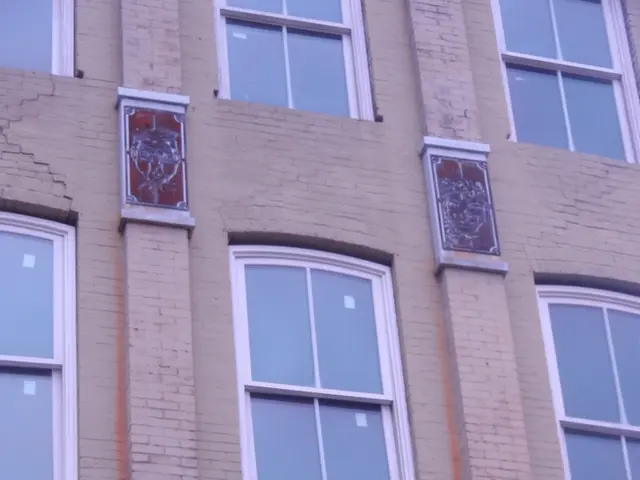European coastline's oldest cathedral resides in Croatia
In the heart of the historic Croatian city of Split, the Cathedral of Saint Domnius stands as a testament to antiquity. This architectural marvel is Europe's oldest surviving cathedral, dating back to the era of the Roman Empire. Originally constructed as Diocletian's mausoleum during the 4th century, it was later transformed into a Catholic church in the 7th century.
Diocletian, a native of Dalmatia and builder of the famous palace in Split, constructed the monument to house his remains. The cathedral now honors Saint Domnius, a bishop who was martyred by Diocletian, adding a layer of irony to its storied history.
The structure of the cathedral remains a captivating sight, with an octagonal base encircled by 24 granite Corinthian columns, representative of Roman art. Over the centuries, additions such as a bell tower in the 12th century and a Baroque apse in the 17th century have melded with its original form. The bell tower, standing at 57 meters high, offers a breathtaking vista of the city, including the ochre-roofed houses, Diocletian's palace, and the azure Adriatic Sea.
In addition to its architectural magnificence, the Cathedral of Saint Domnius houses a priceless religious heritage. Its walnut main entrance features carved panels from the life of Christ, crafted by local artist Andrija Buvina in 1214. Inside, the cathedral reveals frescoes, carved friezes, and reliefs dedicated to the Virgin Mary and Saint Domnius.
The cathedral is accessible to visitors daily, offering a glimpse into Croatia's rich historical and spiritual tapestry. With reduced hours outside of the summer season, the cathedral and its bell tower can be explored for a singular euro admission charge. For those without time to venture inside, the cathedral's majestic silhouette can still be admired along the "Poljana Kraljice Jelene" pedestrian walkway, surrounded by the characteristic arcades and old building fronts typical of the historic center.
For those planning a visit to Croatia, the historic sites of ancient Rome are not to be missed. In addition to the Cathedral of Saint Domnius, the Palazzo di Diocleziano (Diocletian's Palace), located within Split, is a UNESCO World Heritage Site and features a blend of Roman and Christian architecture. The medieval town of Trogir, also a UNESCO World Heritage Site, showcases a mix of Romanesque, Gothic, Renaissance, and Baroque styles. The ancient city of Salona and the Dubrovnik City Walls offer further insight into Croatia's rich historical and archaeological heritage.
[1] Diocletian's Palace. (n.d.). UNESCO World Heritage Center. https://whc.unesco.org/en/list/32[2] Historic City of Trogir. (2017). UNESCO World Heritage Center. https://whc.unesco.org/en/list/49[3] The Old City of Zadar. (2017). UNESCO World Heritage Center. https://whc.unesco.org/en/list/598[4] The Historic City of Dubrovnik. (2017). UNESCO World Heritage Center. https://whc.unesco.org/en/list/490
Exploring the enchanting cityscapes of Croatia, travelers can immerse themselves in the lifestyle of ancient Rome. The Cathedral of Saint Domnius, a architectural marvel in Split, showcases the harmonious blend of Roman and religious art. [1]
For a comprehensive exploration of Croatia's rich historical heritage, tourists should also visit the UNESCO World Heritage Site of Diocletian's Palace, situated within Split, and the medieval town of Trogir, both displaying intricate mixes of Romanesque, Gothic, Renaissance, and Baroque styles. [2][3]




